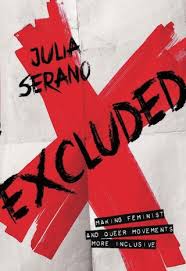I was pretty eager when I picked up writer, performer, and activist Julia Serano’s latest book, Excluded: Making Queer and Feminist Movements More Inclusive. I had read her first book, Whipping Girl: A Transsexual Woman on Sexism and the Scapegoating of Femininity back when it came out, and thought it was totally mind-blowing and soRead More
